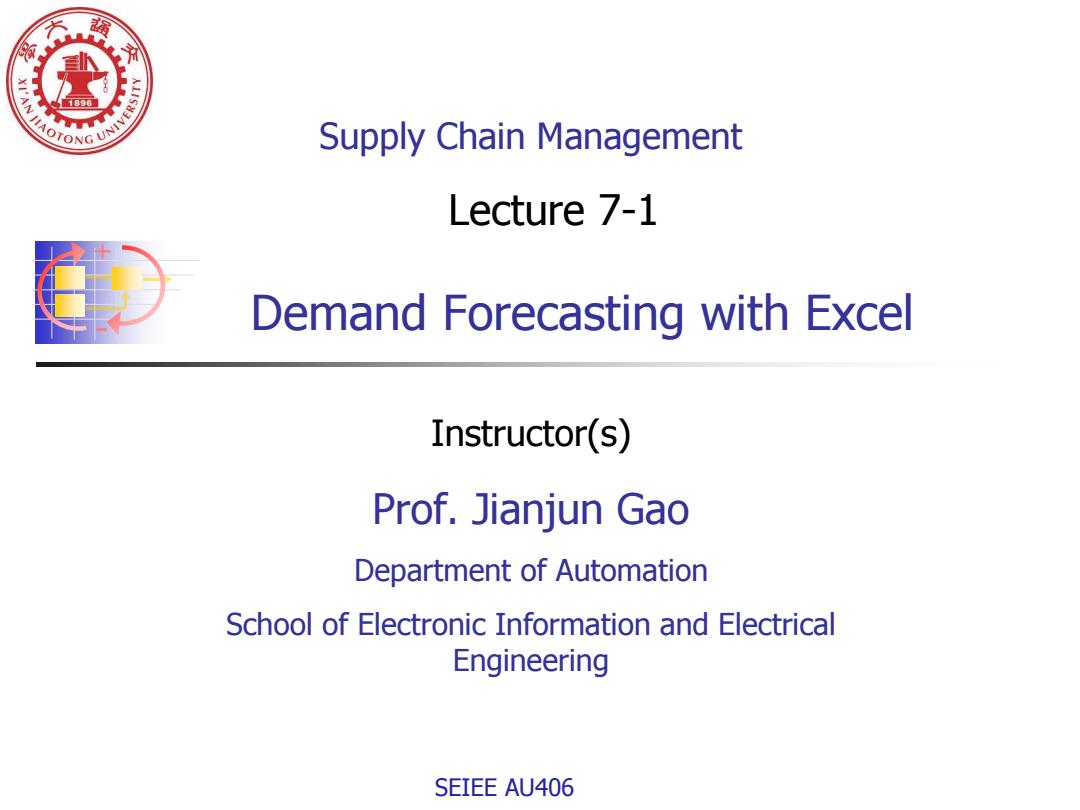
JIAOTONG UNIVERSITY 1096 Supply Chain Management Lecture 7-1 Demand Forecasting with Excel Instructor(s) Prof.Jianjun Gao Department of Automation School of Electronic Information and Electrical Engineering SEIEE AU406
Supply Chain Management Instructor(s) SEIEE AU406 + - Demand Forecasting with Excel Prof. Jianjun Gao Department of Automation School of Electronic Information and Electrical Engineering Lecture 7-1
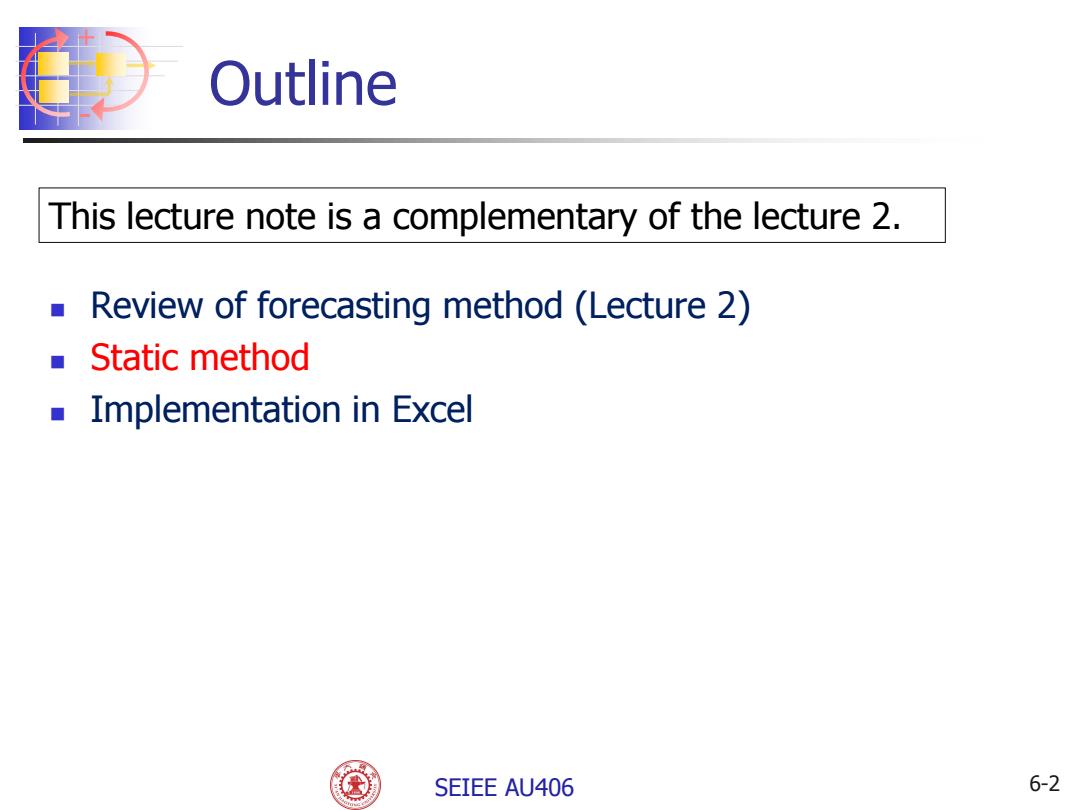
Outline This lecture note is a complementary of the lecture 2. Review of forecasting method (Lecture 2) ■Static method Implementation in Excel SEIEE AU406 6-2
+ - SEIEE AU406 Outline Review of forecasting method (Lecture 2) Static method Implementation in Excel 6-2 This lecture note is a complementary of the lecture 2

Characteristics of Forecasts Forecasts are always wrong.Should include expected value and measure of error. Long-term forecasts are less accurate than short-term forecasts (forecast horizon is important) Aggregate forecasts are more accurate than disaggregate forecasts SEIEE AU406 7-3
+ - SEIEE AU406 7-3 Characteristics of Forecasts Forecasts are always wrong. Should include expected value and measure of error. Long-term forecasts are less accurate than short-term forecasts (forecast horizon is important) Aggregate forecasts are more accurate than disaggregate forecasts
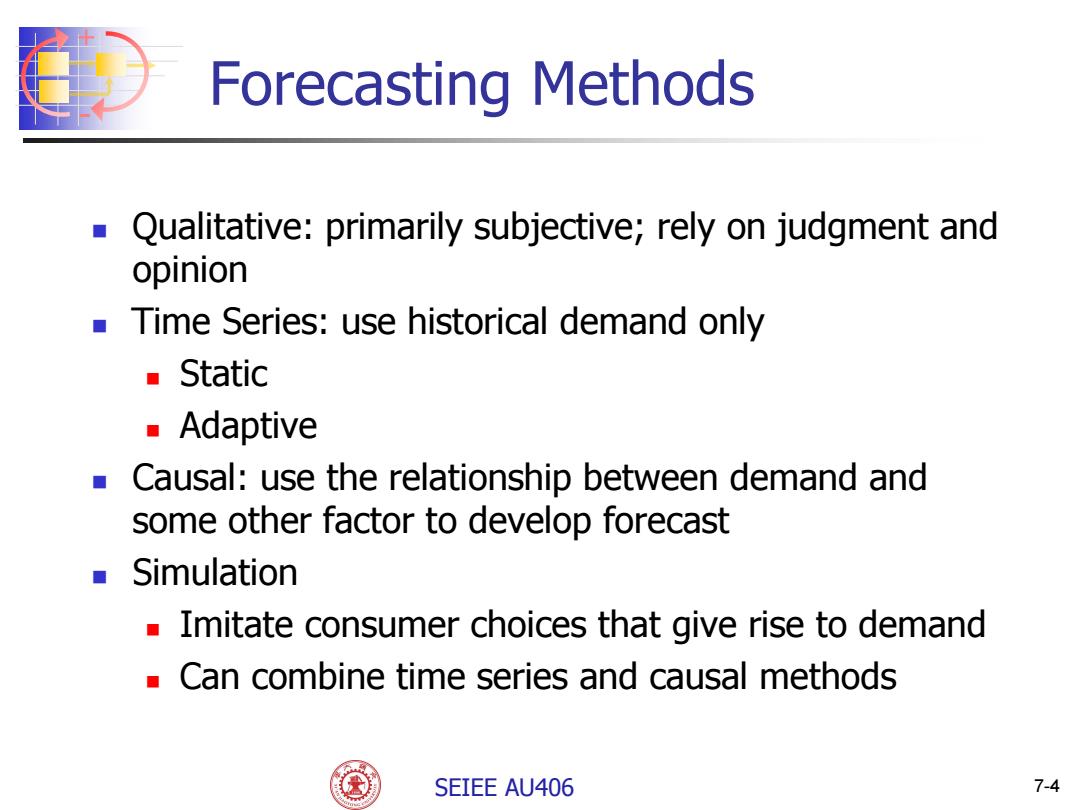
Forecasting Methods Qualitative:primarily subjective;rely on judgment and opinion Time Series:use historical demand only Static ■Adaptive ■ Causal:use the relationship between demand and some other factor to develop forecast Simulation Imitate consumer choices that give rise to demand Can combine time series and causal methods SEIEE AU406 7-4
+ - SEIEE AU406 7-4 Forecasting Methods Qualitative: primarily subjective; rely on judgment and opinion Time Series: use historical demand only Static Adaptive Causal: use the relationship between demand and some other factor to develop forecast Simulation Imitate consumer choices that give rise to demand Can combine time series and causal methods
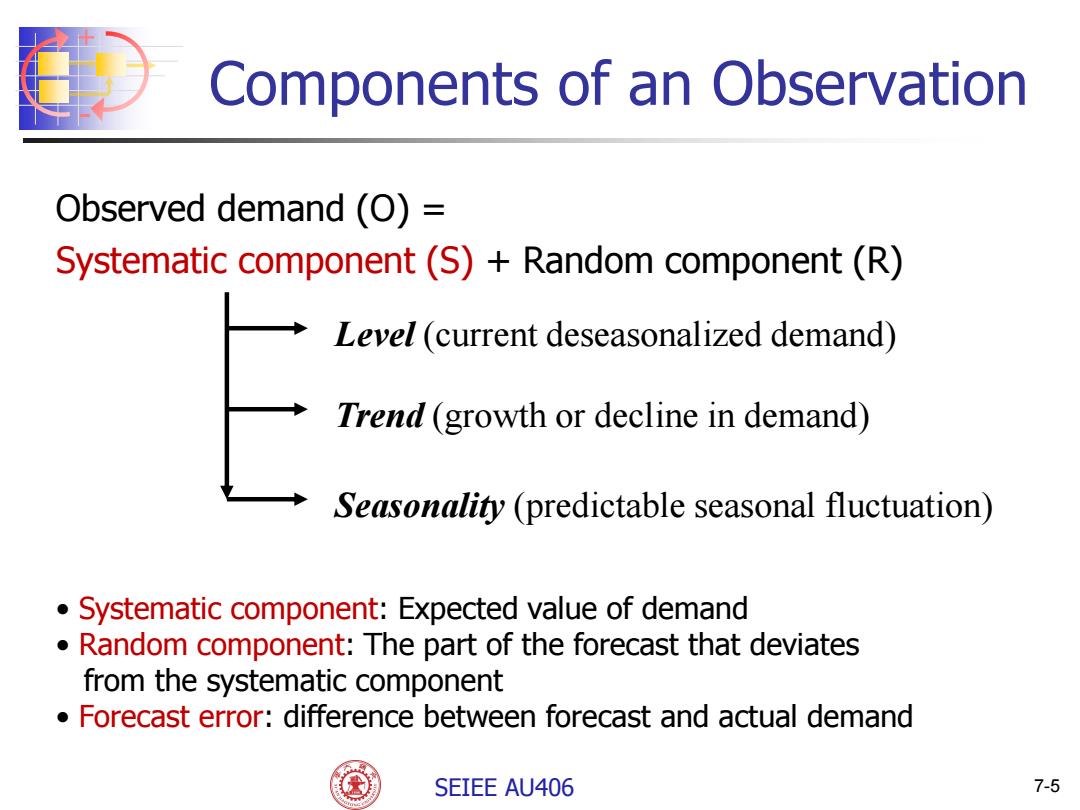
Components of an Observation Observed demand (O)= Systematic component(S)+Random component(R) Level (current deseasonalized demand) Trend (growth or decline in demand) Seasonality (predictable seasonal fluctuation) Systematic component:Expected value of demand Random component:The part of the forecast that deviates from the systematic component Forecast error:difference between forecast and actual demand SEIEE AU406 7-5
+ - SEIEE AU406 7-5 Components of an Observation Observed demand (O) = Systematic component (S) + Random component (R) Level (current deseasonalized demand) Trend (growth or decline in demand) Seasonality (predictable seasonal fluctuation) • Systematic component: Expected value of demand • Random component: The part of the forecast that deviates from the systematic component • Forecast error: difference between forecast and actual demand
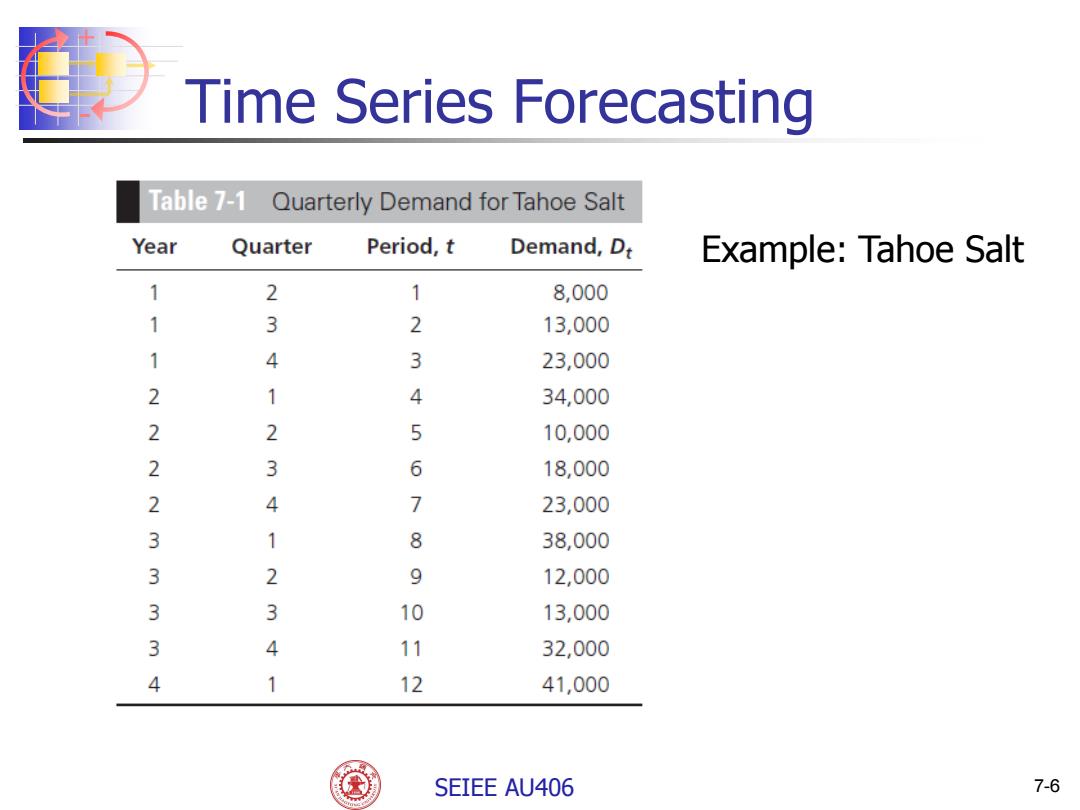
Time Series Forecasting able 7-1 Quarterly Demand for Tahoe Salt Year Quarter Period,t Demand,Dt Example:Tahoe Salt 1 2 1 8,000 1 3 2 13,000 1 4 3 23,000 2 1 4 34,000 2 2 5 10,000 2 3 6 18,000 2 4 7 23,000 3 1 8 38,000 3 2 9 12,000 3 3 10 13,000 34 4 11 32,000 1 12 41,000 SEIEE AU406 7-6
+ - SEIEE AU406 7-6 Time Series Forecasting Example: Tahoe Salt
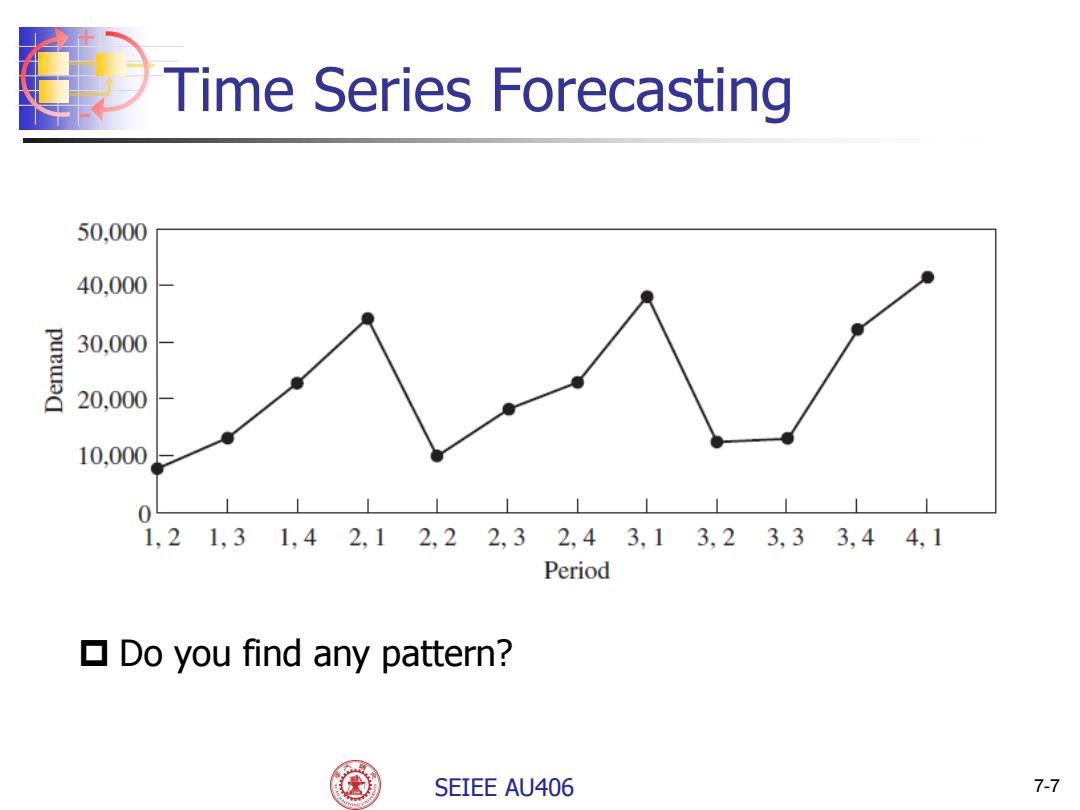
Time Series Forecasting 50.000 40.000 puew d 30.000 20.000 10.000 0 1,21,31,42,12,22,32,43,13,23,33,44,1 Period Do you find any pattern? SEIEE AU406 7-7
+ - SEIEE AU406 7-7 Time Series Forecasting Do you find any pattern?
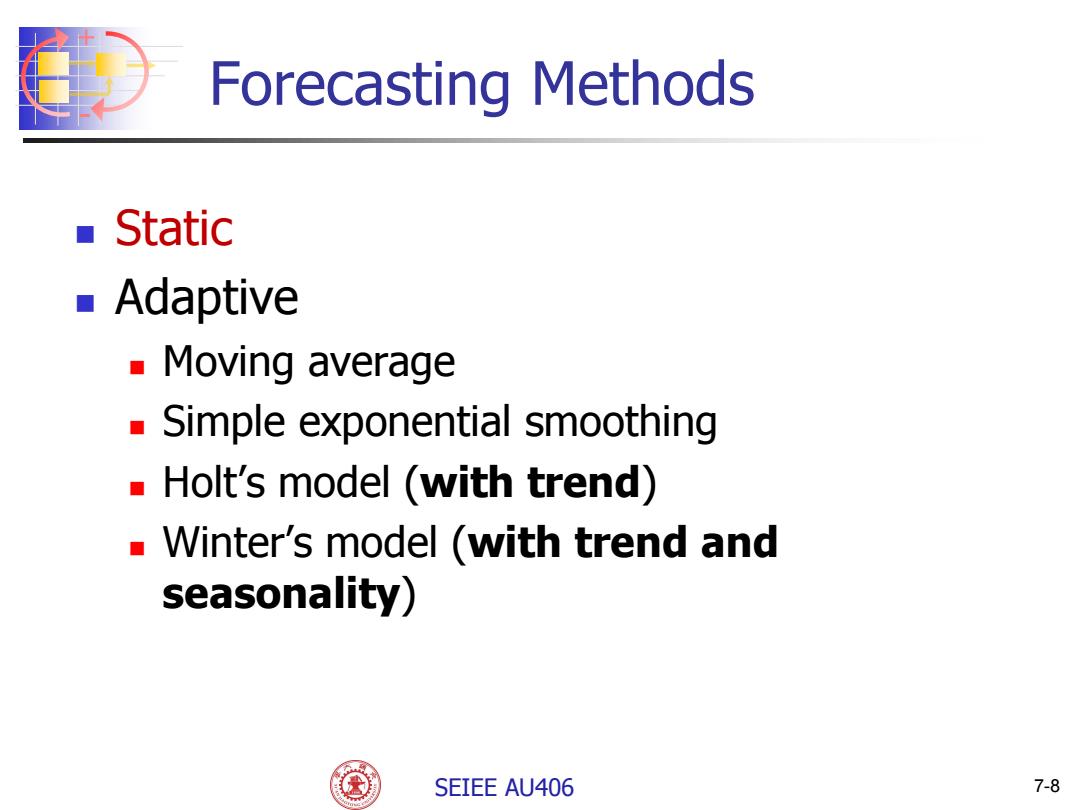
Forecasting Methods Static Adaptive Moving a average Simple exponential smoothing Holt's model (with trend) Winter's model (with trend and seasonality) SEIEE AU406 7-8
+ - SEIEE AU406 7-8 Forecasting Methods Static Adaptive Moving average Simple exponential smoothing Holt’s model (with trend) Winter’s model (with trend and seasonality)

Basic Approach to Demand Forecasting Understand the objectives of forecasting Integrate demand planning and forecasting Identify major factors that influence the demand forecast Understand and identify customer segments ■ Determine the appropriate forecasting technique Establish performance and error measures for the forecast SEIEE AU406 7-9
+ - SEIEE AU406 7-9 Basic Approach to Demand Forecasting Understand the objectives of forecasting Integrate demand planning and forecasting Identify major factors that influence the demand forecast Understand and identify customer segments Determine the appropriate forecasting technique Establish performance and error measures for the forecast

Time Series Forecasting Methods Goal is to predict systematic component of demand Multiplicative:(level)(trend)(seasonal factor) Additive:level trend seasonal factor Mixed:(level trend)(seasonal factor) Static methods Adaptive forecasting SEIEE AU406 7-10
+ - SEIEE AU406 7-10 Time Series Forecasting Methods Goal is to predict systematic component of demand Multiplicative: (level)(trend)(seasonal factor) Additive: level + trend + seasonal factor Mixed: (level + trend)(seasonal factor) Static methods Adaptive forecasting